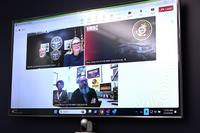In a recent Transition Assistance Program training, several of the female service members in the room shared their excitement over being able to wear makeup, jewelry and high heels at work as they transition into civilian jobs once they leave the military and their uniforms behind.
The military uniform serves many purposes, and there are long-standing reasons and traditions for its look, functionality and style. Many service members leave their uniform and enter a work culture where the rules and standards around image and dress are less clear and consistent.
But image and presence influence perception and reputation, and that can be confusing for newcomers.
Company Guidelines
While many companies may publish suggestions, guides and "dress codes," they aren't typically issuing rules as you might have with a standard-issue uniform. These guidelines are designed to serve many purposes, including:
Creating a safe place to work. Companies may require long pants, covered arms, removal of piercings and jewelry for safety reasons. For instance, if wearing open-toed shoes could present a hazard around heavy equipment, the company may require steel-toed or closed-toed shoes to be worn at all times.
Presenting a certain appearance to customers and clients. In businesses where clients visit the premises or where company representatives interact off-site with customers or the public, a company may issue dress-code standards to communicate a professional and respectful attitude and appearance and align with company values.
Removing distractions. Companies could require employees to avoid tank tops, low-cut blouses, loud jewelry, shorts, skirts of a certain length and heels of a certain height to eliminate distraction among co-workers.
Industry Guidelines
I'm often asked about unwritten dress codes and wardrobe rules across various civilian industries. Are there any notable consistencies? Using a broad brush, I offer that industries such as finance, health care and law tend to promote a more professional dress code. Suits, conservative clothes and colors, and tailored looks are widely accepted. This could be because of the high-trust nature of their work, or industry tradition.
Industries that are more creative in nature, such as advertising, fashion, the arts, marketing and entertainment fields tend to offer more relaxed or self-expressive rules around dress code. Similarly, many technology workers enjoy very casual and relaxed dress, as an industry standard.
Geographical Guidelines
There could also be said to be guidelines according to geography. The East Coast of the United States tends to see workers dress more formally than, say, the West Coast, where they prefer a more relaxed image.
For example, if you worked in finance on Wall Street in New York, you'd likely wear a tailored business suit every day. Someone in that same job in Santa Monica, California, might wear a skirt and blouse instead. For men, the same guidelines tend to apply: dressier in the East, more casual in the West.
Always Dress Up for the Interview
While the company or industry may promote a certain look for employees, the interview is always a special and unique situation. The rule I follow is: Always dress above how you would show up dressed for work.
If you'd work in jeans and a blouse, wear dress slacks and a blazer to an interview. If you'd wear a professional wardrobe on the job, dress in a suit for the interview. The interview is a formal occasion, and dressing up for the meeting shows respect for yourself and the interviewer.
Remember that these are broad guidelines. Researching the company, location and industry of the place you want to work is important. Look online for insight about how people who work at that company dress. Talk to others in the field about their norms on the job for more specific guidance.
Want to Know More About Veteran Jobs?
Be sure to get the latest news about post-military careers, as well as critical info about veteran jobs and all the benefits of service. Subscribe to Military.com and receive customized updates delivered straight to your inbox.
















